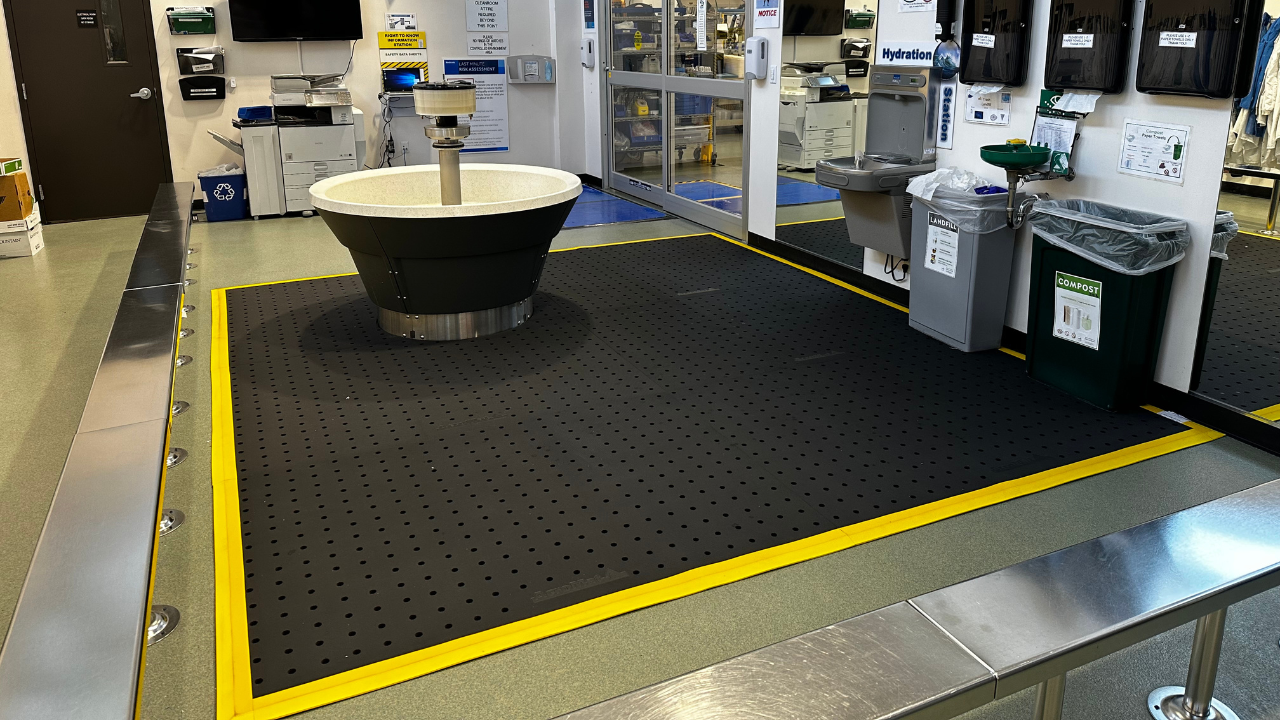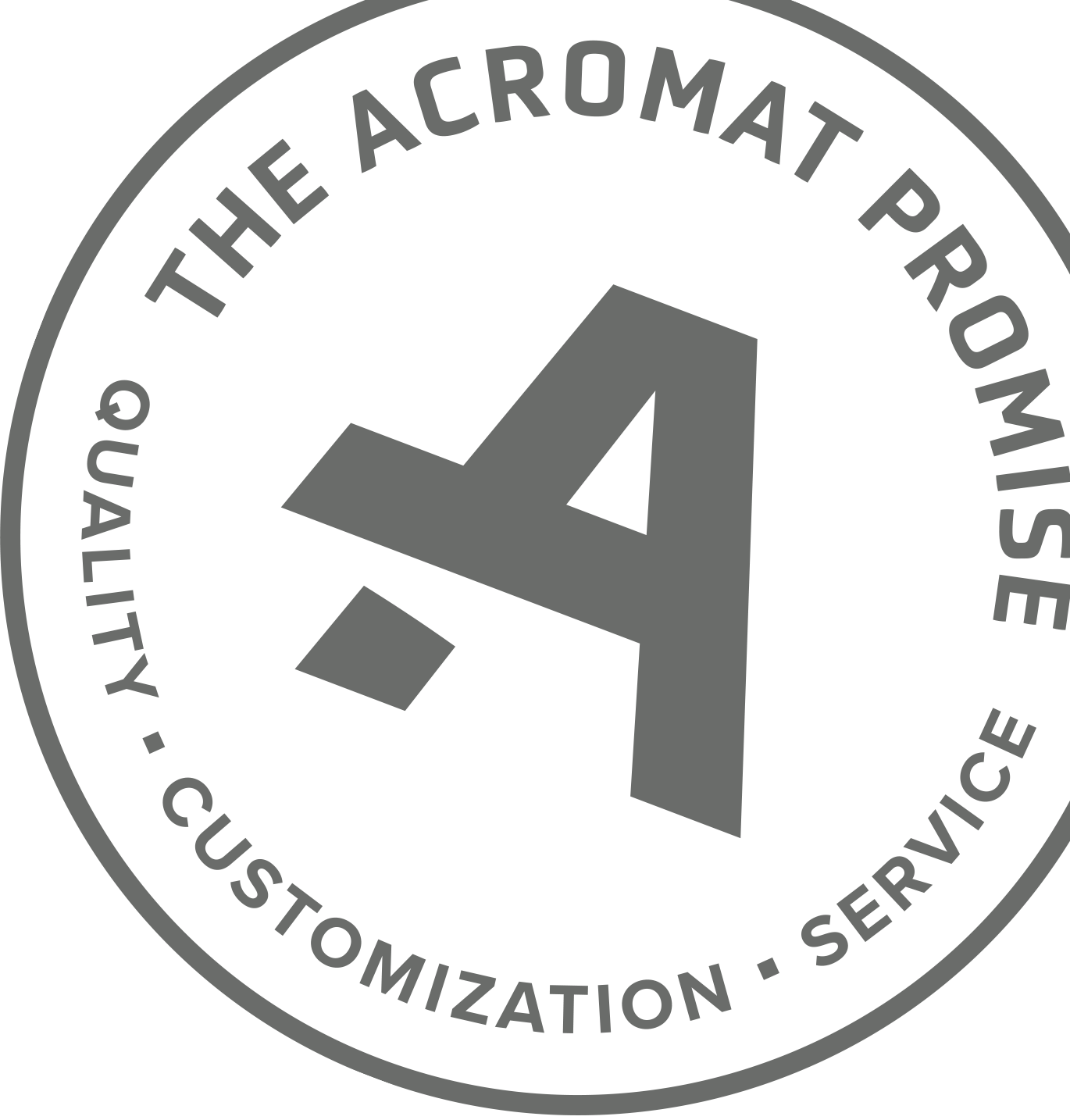Anti-fatigue mat installation is one of the most overlooked tasks in safety. The process is critical to extending mat life, protecting your budget, and ensuring safety.
Installation is the entire safety mat process, from placing an order for anti-fatigue mats and educating your team members on how to use and care for them, to laying them out in your facility and the maintenance required in the months ahead.
Here are 6 anti-fatigue mat installation tips:
1. Plan for the installation
A job well planned is half done. Whether modular tiles that require a time-consuming build, a high number of standard-sized mats that will be spread throughout a facility, or a large custom mat, it's important to have a team in place who knows what needs to be done and what's expected of them.
These 7 questions should be answered before new mats arrive to your facility:
- Who need to be involved in the installation?
- Does anything need to be moved or rearranged?
- Will you need help lifting or moving equipment?
- Does the area need to be cleaned?
- How long will production need to stop to install your mats?
- Do we know where each mat will go?
- Are all tasks on the calendar?
We were invited on-site to a packaging facility to help with installation of a large, custom 100-1 Series AcroMat mat. It’s a 24-hour facility with just a single 60-minute break in production each morning. Without a precise plan, the team wouldn’t have been able to get their equipment moved, mats unboxed, employees educated, and mats laid out in this one-hour stretch. With a plan, the process was seamless and production uninterrupted.
 At AcroMat, we build our mats as a single piece to prevent the trip hazards that come with having to stack separate mats next to each other or piece together tiles that easily break apart. As a single piece, they can simply be unboxed and laid out in your facility. No tiles, no puzzle pieces.
At AcroMat, we build our mats as a single piece to prevent the trip hazards that come with having to stack separate mats next to each other or piece together tiles that easily break apart. As a single piece, they can simply be unboxed and laid out in your facility. No tiles, no puzzle pieces.
Action Step
“What’s your lead time?” Before placing an anti-fatigue mat order, uncover or ask this simple question. Planning is impossible without this insight. After you order a mat, how long until it arrives? Most suppliers will give ranges in days or even weeks. In safety, you need to know where and when the products you order will arrive.
At AcroMat, we hand-craft and ship every order within 10 business days. Whether you order a single 3 ft. by 5 ft. mat or 50 large custom mats of various shapes and sizes, your order will ship within 10 days of purchase. We guarantee this to make sure safety managers can proactively plan and be prepared.
2. Dispose of All Old Mats
We often see facilities stack new mats on top of the old ones to create extra cushion. This not only creates a trip hazard, but the uneven surfaces cause ergonomic stress on your workers. Refresh your team on the anti-fatigue mat disposal process. Beyond the hazards above, a lack of clarity in this area can lead to lost production.
Action Step
If your workers are stacking new mats on top of the old ones, it might be a sign of a disengaged team. They may think the new mats lack the ergonomic support they need and deserve. At the very least, it’s worth asking some very direct questions.
 Disposing of your old mats makes sure employees don't stack them, creating preventable hazards.
Disposing of your old mats makes sure employees don't stack them, creating preventable hazards.
3. Clean the Area Fully
Placing new mats in unclean areas is one of the quickest ways to diminish mat life expectancy. Sawdust, metal shavings, fiber glass, and other particles can erode mats from underneath and also cause them to slide. Mats over damp, unclean areas can cause harmful particle buildup like mold, mildew, and other bacteria.
Action Step
Get cleaning on the calendar and educate your teams on why it’s important. Anti-fatigue mats are an investment; making sure they are placed in an area that is clean makes sure your investment lasts.
 Cleaning your area, not just for mat installation but regularly, protects vulnerable products and people.
Cleaning your area, not just for mat installation but regularly, protects vulnerable products and people.
4. Meticulously Place Your Mats
Whether small or large, rectangle or unique shape, take care with how you place your mats. Mats pushing up against walls, table legs, or machinery can damage them and reduce their life expectancy. These bunch-ups can also cause trip hazards and expose hard, slippery surfaces that are supposed to be covered by your mats.
At AcroMat, our custom mat building tool AcroSketch allows users to design mats of any shape, size, angles and cutouts in minutes. Arriving to each facility as a single mat, laying out the mat is a simple and efficient process. But it’s important to make sure every angle and edge is carefully placed – especially if they’re being lined up in tight and complex work areas.
 Designed in minutes with AcroSketch, this custom one-piece mat for Andersen Windows wraps around equipment and covers the entire work area. The team took extra care when placing the mat to make sure it “fit like a glove” in the exact areas it was needed.
Designed in minutes with AcroSketch, this custom one-piece mat for Andersen Windows wraps around equipment and covers the entire work area. The team took extra care when placing the mat to make sure it “fit like a glove” in the exact areas it was needed.
Action Step
Here's a secret most anti-fatigue mat manufacturers and suppliers don't want you to know. Mats can be repaired; you don't always have to buy new.
Before your next investment, ask your provider if their anti-fatigue mats can be repaired or restored. If the answer is no, ask why. At AcroMat, customers can mail their mats back and we'll gladly repair rips and tears, even add additions to a mat. We also have a Repair Kit you can use to make fixes on-site in minutes.
Watch an anti-fatigue mat be repaired in 30 seconds:
5. Name the Area Each Mat Will Go When Purchasing
We’ve all forgotten where we parked our car in a matter of minutes. If you’re investing in multiple mats, especially in a large facility, make note of where they will be placed during the purchasing process. This can be as simple as writing on a sheet of paper:
3 x 4 w/ yellow borders - metal fab station
4 x 20 with w/ textured surface - shipping
2 x 3 standard black - John D.'s work bench
Action Step
When designing a custom mat with our tool AcroSketch, you can input an area for each mat. When they arrive, you know exactly where they should go. It’s a simple feature, but we included it because safety managers often share how easy it is to forget which mats go where.
6. Make Sure You Have the Products You Need
Slipping and tripping is the second leading cause of injury in manufacturing. There are a number of an anti-sliding products that help keep your mats in place and prevent borders from curling upwards, reducing slipping and tripping risks.
Our proprietary non-slip backing, Grip-R, can be used for areas that need extra precaution to keep mats in place and borders flat. It can be easily cleaned and reapplied and doesn’t leave residue on facility floors.
Another option is industrial strength tape.
Whether you use an anti-sliding product, industrial strength tape, or something else, have the products you need on hand during installation to eliminate risks before they arise.
Action Step
Whichever product you use, make sure it’s designed to hold up in your particular environment. Some lower-quality tapes can peel quickly in more intense environments.
Bonus: Don’t Set and Forget Your Mats!
Clean your mats regularly and educate your operators on why it's important to do so. Even the best mats will break down if left exposed to spills and particles.
Posters and handouts in breakrooms, brief presentations prior to installation, and email reminders can go a long way toward protecting your people and your investments.
 Spending 10 minutes designing a couple reminder posters for entryways and breakrooms can go along way in preserving your anti-fatigue mats.
Spending 10 minutes designing a couple reminder posters for entryways and breakrooms can go along way in preserving your anti-fatigue mats.
Action Step
Ask your supplier about cleaning procedures! Pure nitrile like our 100-1, 100-ESD, and 100-Cleanroom Series mats can be cleaned with industrial strength cleaners, pressure washed and scrubbed, and do not break down to chemicals. Lower-quality mats, like PVC or PVC/nitrile blend, may not hold up. Check with your supplier first to make sure you fully understand the cleaning process.
Main Takeaway
Anti-fatigue mats are an investment. From design to installation and maintenance, every step you take impacts the health, safety, and productivity of your teams. Whether you’re investing in new mats or evaluating the state of your current mats, the steps above can be used to make sure they serve the your teams in the way you need.
--
Custom anti-fatigue mats don't have to be complicated: Try AcroSketch.
Try an AcroMat anti-fatigue mat today: Request a free sample.
See AcroSketch in action:





